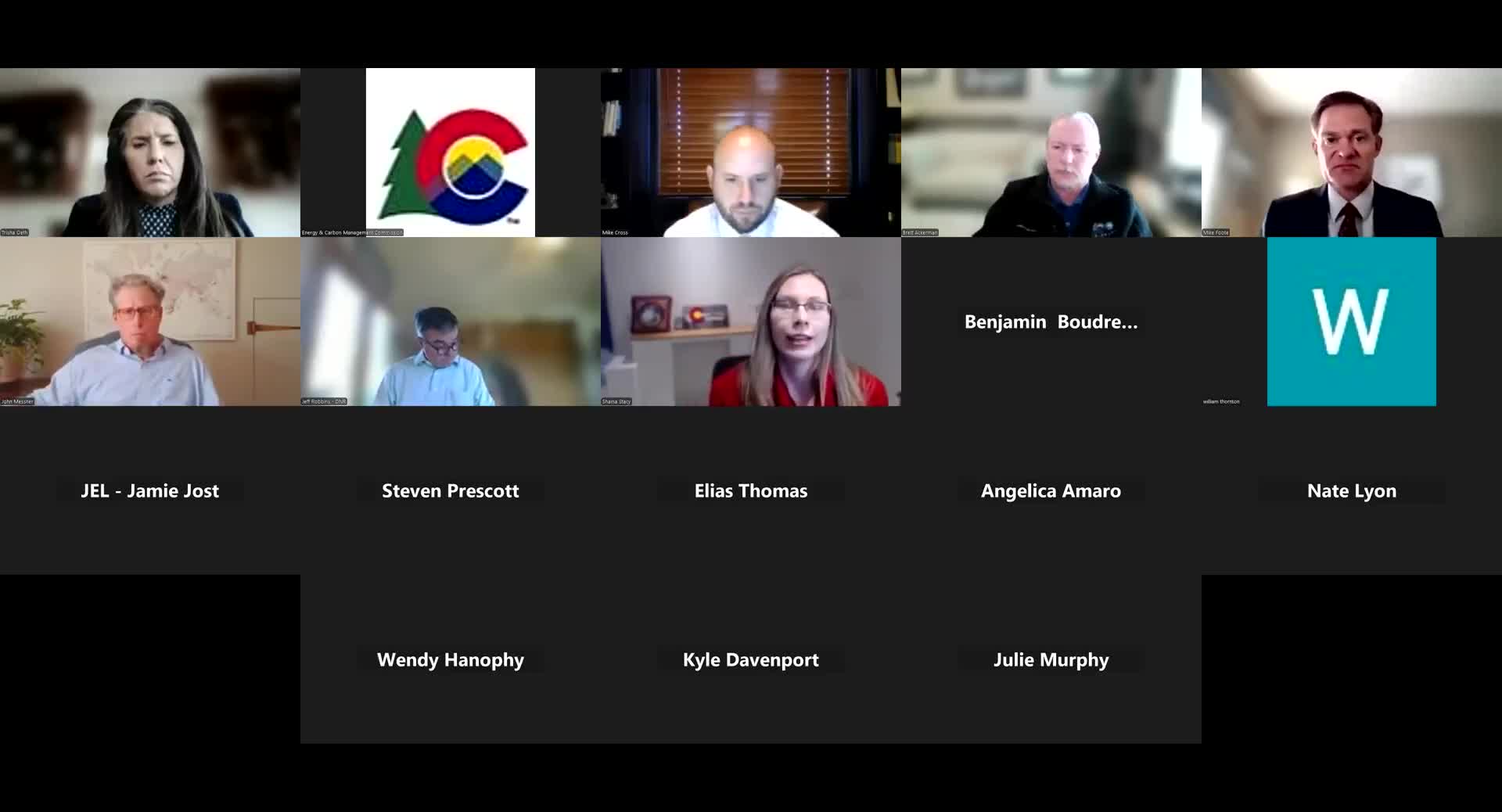Public‑health expert: Sunlight Long location ‘not protective’ given recent studies
November 26, 2025 | Energy and Mineral Impact Assistance State Advisory Committee, Governor's Boards and Commissions, Organizations, Executive, Colorado
This article was created by AI summarizing key points discussed. AI makes mistakes, so for full details and context, please refer to the video of the full meeting. Please report any errors so we can fix them. Report an error »

Dr. Shana Stacy, an epidemiologist called by STAR, told the Energy and Carbon Management Commission on Nov. 25 that a growing body of Colorado and U.S. studies link proximity or well density of unconventional oil and gas development to adverse birth outcomes, some cardiovascular impacts and childhood leukemia risk. "Given this latest work, particularly in Colorado, the current proposed location of the Sunlight Long facility is not protective of public health and well-being," Stacy said in direct testimony.
Stacy described how many recent observational studies use spatial surrogates (inverse distance‑weighted well counts) to estimate exposure and, she said, several have reported statistically significant associations at buffers beyond 3,000 feet. During cross‑examination by Crestone counsel Jamie Jost, Stacy acknowledged limits of those surrogates — they do not measure individual time‑activity patterns and cannot by themselves identify a single chemical cause — but she emphasized that many studies adjust for maternal and socioeconomic confounders available in state registries.
Crestone and its witnesses argued that protections in the application, Arapahoe County permit conditions, and ECMC rules (including best management practices) reduce community risk. Stacy agreed that her review did not incorporate the operator's "90+" BMPs in modeling but said the epidemiological evidence showing associations at distance means the current setback and site placement warrant reexamination.
Commissioners pressed Stacy on policy implications and whether she could specify a single "protective" setback; she declined to state a definitive threshold but reiterated that multiple studies report effects beyond 3,000 feet and that increasing distance and reducing emissions are straightforward risk‑mitigation approaches. The commission paused the hearing for rebuttal and later continued the record for deliberation on Dec. 3, 2025.
Stacy described how many recent observational studies use spatial surrogates (inverse distance‑weighted well counts) to estimate exposure and, she said, several have reported statistically significant associations at buffers beyond 3,000 feet. During cross‑examination by Crestone counsel Jamie Jost, Stacy acknowledged limits of those surrogates — they do not measure individual time‑activity patterns and cannot by themselves identify a single chemical cause — but she emphasized that many studies adjust for maternal and socioeconomic confounders available in state registries.
Crestone and its witnesses argued that protections in the application, Arapahoe County permit conditions, and ECMC rules (including best management practices) reduce community risk. Stacy agreed that her review did not incorporate the operator's "90+" BMPs in modeling but said the epidemiological evidence showing associations at distance means the current setback and site placement warrant reexamination.
Commissioners pressed Stacy on policy implications and whether she could specify a single "protective" setback; she declined to state a definitive threshold but reiterated that multiple studies report effects beyond 3,000 feet and that increasing distance and reducing emissions are straightforward risk‑mitigation approaches. The commission paused the hearing for rebuttal and later continued the record for deliberation on Dec. 3, 2025.
View the Full Meeting & All Its Details
This article offers just a summary. Unlock complete video, transcripts, and insights as a Founder Member.
✓
Watch full, unedited meeting videos
✓
Search every word spoken in unlimited transcripts
✓
AI summaries & real-time alerts (all government levels)
✓
Permanent access to expanding government content
30-day money-back guarantee

